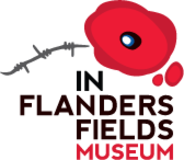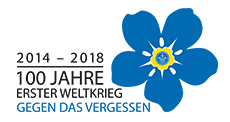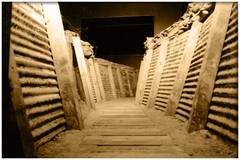Exhibitions
Belgium
"Target: Children - First World War Propaganda"
During the First World War, it was of major importance for the warring factions to be aware of public opinion, and to influence it – not least with the aid of the mass media that emerged at the end of the 19th century. The war impacted on all areas of everyday life, including the everyday lives of children. It crept into children's lives through seemingly innocent channels such as colouring and reading books. Until the early 20th century, children were simply considered an integral part of society and were treated accordingly. This changed during the First World War. In the course of the first worldwide war, children were suddenly seen as individuals that could be politically manipulated. They played an important role in war propaganda.The western nations thought it necessary and useful to inform children about the 'glory' and the 'rightness' of battles. To do so, they employed means and methods that children also love in times of peace, such as picture stories, adventure novels, wildlife stories, colouring books and toys. In this way, their minds were opened to the war's destructive influences.
On the basis of literary examples, picture stories, magazines, toys and other channels aimed at children, the exhibition 'Target: Children. First World War Propaganda' illustrates how the First World War influenced the lives of children and their parents. At the same time, it indirectly highlights how the status of children has changed in western societies.
Where:
Sint-Pietersplein 9
9000 Ghent
When:
November 2015 - April 2016
"Decoding the Front"
The Memorial Museum of Passchendaele's latest exhibition focuses on a very exciting topic: military communication 100 years ago.
Accessing the enemy's messages and information has always been invaluable, not just during the First World War. Obtaining and painstakingly decoding enemy communications was a task that kept many soldiers busy.
The exhibition therefore focuses on the exchange and transmission of messages, a somewhat touchy but extremely interesting aspect of military history.
Where:
Memorial Museum Passchendaele 1917
Ieperstraat 5
8980 Zonnebeke
Belgium
When:
24 April - 15 December 2015

In Flanders Fields Museum – 'First World War'
From 2014 onwards, the In Flanders Fields Museum will be telling some personal stories of ordinary people with a new permanent exhibition in the historic Tuchhalle, thereby creating a link to the First World War landscape in West Flanders. Following some conversion work, the museum is now twice its former size and also houses a First World War information centre. On display are over 2,000 original objects and documents, and visitors can learn four personal stories in detail at interactive information stands.
Where:
In Flanders Fields Museum
Grote Markt
Ypres 8900

Lange Max Museum
The Lange Max Museum is a must-see place for the World War I tourist on the German side of the western frontline. The farmyard is the centre of this curtural and touristic location.
A long lane takes you from the farmyard to the remains of the artillerie platform of the former German cannon 'Lange Max'.
In a brand new contemporary museum, the visitor learns all about the huge cannon that was designed to bombard Dunkirk.
The German occupation of Koekelare gets full attention. A unique exhibition tells you all about the organisation behind the frontline. The production of army goods ran at full speed in Koekelare.
Where:
Lange Max Museum
Clevenstraat 2
8680 Koekelare
Belgium








